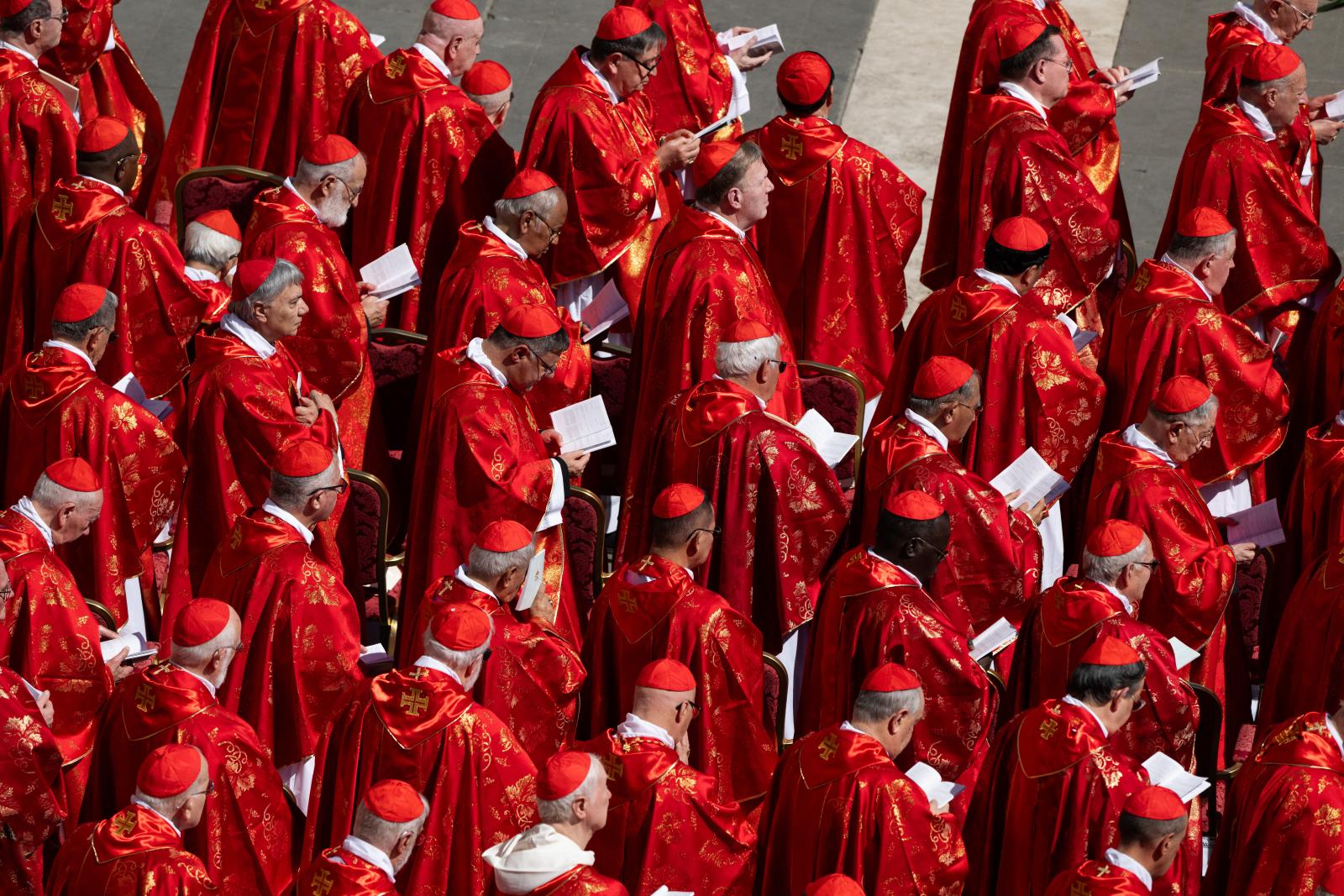By Paul Moynihan
As the formal period of mourning for Pope Francis is now completed, the Cardinals gathered in Rome can now commence the Conclave that will elect his successor. All the Cardinals in Rome will celebrate a Mass ‘For the Election of a Pope’ together in St Peter’s Basilica on Wednesday morning, 7 May. Then in the afternoon, the Cardinal Electors (those under 80 years of age) will process into the Sistine Chapel singing the Litany of Saints and the hymn ‘Veni Creator Spiritus’ (‘Come holy Ghost, Creator, come).
Once they have all sworn an oath while touching the Gospel Book, the famous words ‘Extra omnes’ (commanding all others to leave) will be said by the Papal Master of Ceremonies, before the doors of the famous chapel are closed and locked. Hence, the name – conclave – meaning with a key. The Cardinals will listen to an address, to be given by Cardinal Cantalamessa, aged 90, the former preacher of the Papal Household, after which he and the Papal MC also leave.
Then, in that famous Chapel, under the frescoes of Michaelangelo, the voting begins. It is why these men were created Cardinals in the first place. It is the most important part of their office in the Church, the most important thing they can ever do, to find a successor to Peter, Prince of the Apostles, to shepherd the Church forward. For so many of them, it will be their first and possibly only time they will ever do this. So the responsibility is immense. Among them this time are three Cardinals from our country (and that in itself is a ‘first’: our own Cardinal Nichols, the Dominican Cardinal Timothy Radcliffe from Oxford, and, from Yorkshire, Cardinal Arthur Roche, the former Prefect of the Dicastery for Divine Worship and Discipline of the Sacraments.
Each Cardinal will write on a ballot paper the name of the person they wish to see as Pope. One by one, they will process and place their ballot paper on a plate and tip it into an urn. The votes will then be counted and checked carefully before the result is declared. There is one vote on the first evening, and on the following day, two in the morning and two more in the late afternoon, and so on for the following days.
The first that the world will know of a result is by smoke from the chimney of the Sistine Chapel. In order to be elected, there needs to be a two-thirds majority of the votes cast in favour of one person. Black smoke will indicate no one has achieved that; white smoke (and bells being rung from St Peter’s) will tell us the good news, ‘Habemus Papam’, we have a new Pope. About an hour after the white smoke, we can expect to see our new Holy Father on the balcony of St Peter’s giving his first blessing to the city and the world.
Photo: Mazur/cbcew.org.uk
